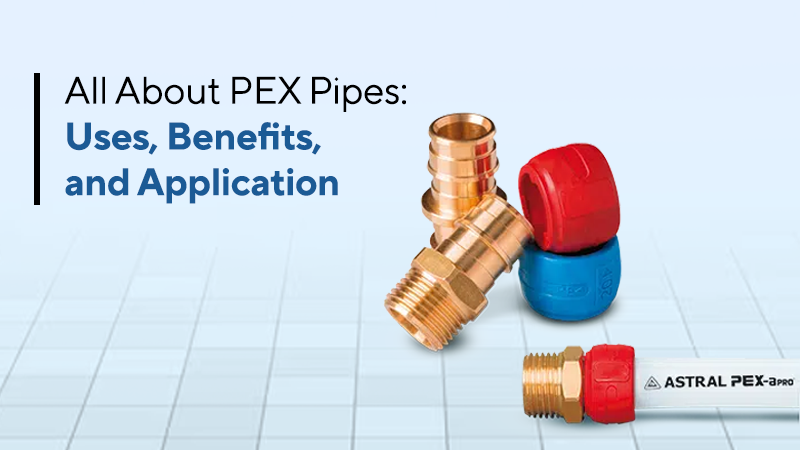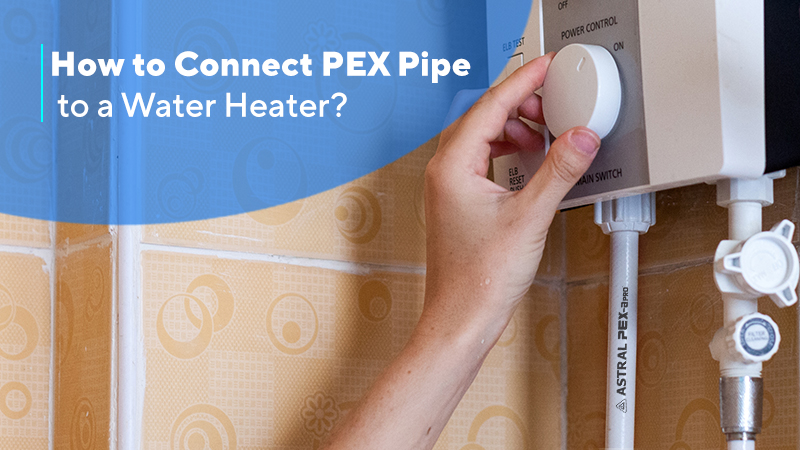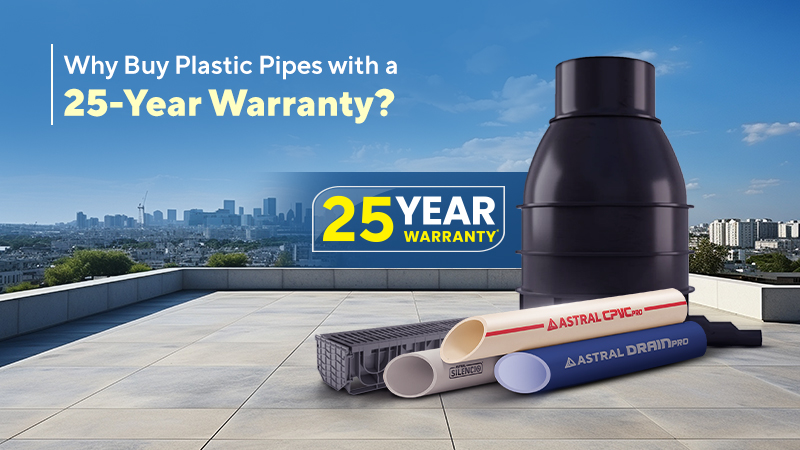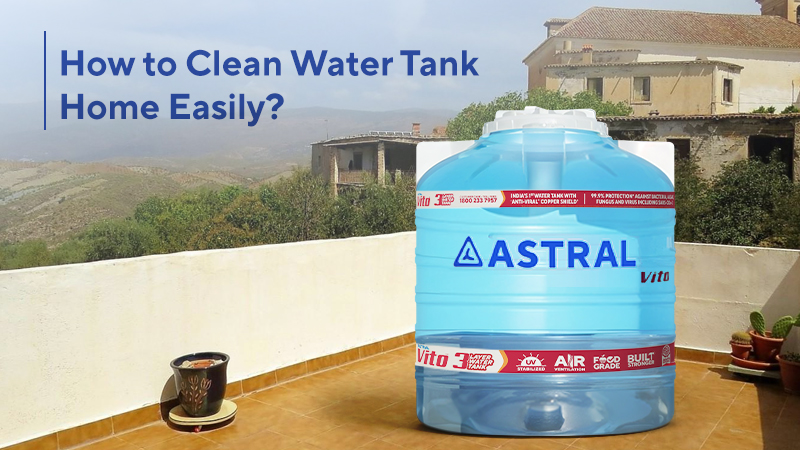
10 May 2025
All About PEX Pipes: Uses, Benefits and Applications
When choosing pipes for a home or office space, many prioritise rigid materials, such as metal, for their durability and longevity. However, the stiffness of metal pipes demands multiple joints and fittings to navigate around walls and corners, which can increase installation time and raise the risk of future leaks. Cross-linked polyethylene pipes, or PEX pipes offer a flexible and efficient alternative.
Widely used in hot and cold water applications, PEX pipes can withstand temperature variations. This, coupled with their durability, makes them a preferred choice among contractors for homes and commercial plumbing. In this guide, we will explain what is PEX pipe, and explore the types and the numerous benefits of PEX pipes to help you make an informed choice for your plumbing project.
What is Pex Pipe?
PEX or cross-linked polyethylene pipes are more flexible in nature than metal pipes due to their material composition. These not-so-regular plastic pipes bend easily around corners and reduce the overall need for creating joints during the installation of new piping systems. There are various types of PEX pipes, each offering unique flexibility, material composition and resistance to environmental factors like temperature and chemicals.
When compared to metal pipes, PEX not only simplifies installation by requiring less complicated labour, but its flexibility and tolerance to a wide range of chemicals and temperatures also improve the total efficiency of the plumbing system. With fewer joints, there is also a lower risk of fittings forming cracks or undergoing corrosion.
Let’s dive into all the details that will help you choose the right PEX pipe for your plumbing needs.
Types of Pex Pipes
There are three main types of PEX pipes: PEX-A, PEX-B and PEX-C, each designed to meet specific plumbing needs.
1. PEX-A
Known for its high flexibility, PEX-A is ideal for installations requiring tight bends. It offers excellent resistance to freezing and cracking, making it a reliable option in colder climates. Though the most expensive of the three, it is also the easiest to work with due to its superior flexibility and durability.
2. PEX-B
Slightly less flexible than PEX-A, PEX-B is highly durable and resistant to chlorine and oxidation, making it ideal for systems dealing with chlorinated water. It is more affordable than PEX-A, making it a popular choice for residential plumbing projects.
3. PEX-C
The least flexible and most prone to kinking, PEX-C is best suited for smaller repairs and closed-loop heating systems. It is the most budget-friendly option, offering an economical choice for specific applications that don’t require high flexibility.
Applications of PEX Pipes
Each type of PEX pipe serves different purposes based on its flexibility, durability and temperature resistance:
|
Pex Types |
Application |
|
PEX-A |
Best for residential, commercial and complex plumbing layouts for its tight bends, radiant floor heating ability and fire suppression systems. |
|
PEX-B |
Commonly used for standard residential plumbing applications, such as hot and cold water supply. Also suitable for chlorinated water systems. |
|
PEX-C |
Ideal for minor plumbing repairs, closed-loop radiant heating systems and retrofits where flexibility isn’t a priority. |
Benefits of Pex Pipes
PEX pipes provide numerous advantages over traditional plumbing materials. Here is how the different types of PEX pipes contribute to these benefits:
1. Easy and Quick Installation: All PEX pipes, especially PEX-A, are lightweight and flexible, allowing for easier routing and fewer fittings. This reduces installation time significantly.
2. Cost-Effective: PEX-B and PEX-C are especially budget-friendly, costing less than copper pipes and requiring fewer joints and connectors, thus reducing material and labour costs.
3. Leak Resistance: Fewer fittings mean fewer potential leak points. PEX-A, being the most flexible, offers seamless bends that further reduce the need for additional joints.
4. Quiet Water Flow: These pipes, unlike metal pipes, dampen water hammering sounds, making plumbing systems quieter overall.
5. Temperature Resistance: All PEX types handle hot and cold water effectively. PEX-A offers the best freeze resistance, making it a great choice for colder climates.
6. Corrosion and Chemical Resistance: These pipes are immune to rust and corrosion, unlike traditional metal pipes. PEX-B, in particular, offers excellent resistance to chlorinated water, making it a reliable option for systems that handle such water.
Plumbing systems can be complex, especially with traditional pipes that require multiple fittings and joints, increasing the risk of leaks and maintenance issues. At Astral Pipes, our PEX-A PRO offers a flexible solution, reducing the need for extra joints and streamlining installation.
Engineered for superior flexibility, freeze resistance, long-term durability, and corrosion resistance, it ensures a reliable and low-maintenance plumbing system. Our pipes are certified with ISO and NSF standards, which guarantee the highest quality and safety for your plumbing needs.
Whether you are planning a new plumbing system or upgrading an existing one, with PEX-A PRO, you can trust that your plumbing system will be reliable, long-lasting and easy to maintain. Explore our wide range of plumbing pipes today and experience the flexibility and benefits of PEX pipes for your next project.
Read our blog on What is a Suction Hose Pipe?










